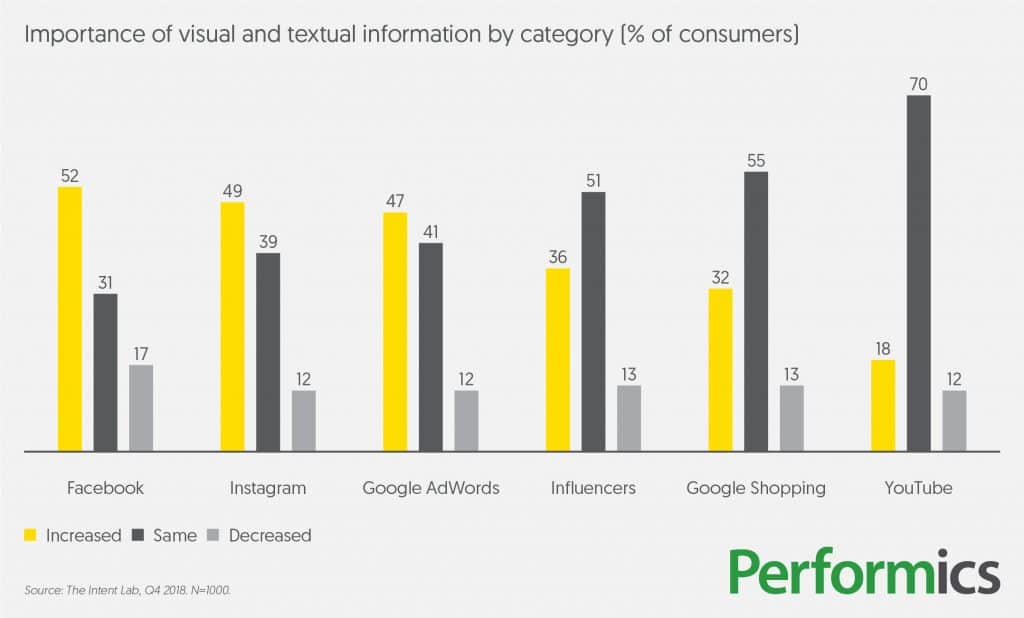Increased investment in paid search by direct-to-consumer brands, and more opportunities for visual storytelling in search, promise to drive continued expansion in search over the next few years. However, brands need to prepare for a big change in Google search metrics that will disrupt costs and outcomes from September.
Direct-to-consumer (DTC) brands to spend more on search and shopping
The continued rise of DTC brands will be a major driver of global digital investment in 2019. Many of these brands came of age on platforms like Facebook and Instagram, and they will continue to invest heavily in these platforms. In addition, 47% of worldwide D2C brands say they will increase investment in Google AdWords in 2019, and 32% say they will increase investment in Google Shopping.
In May, Google announced new Shopping pages that will feature more information, like videos and reviews. Shoppers can choose among various buying options, such as clicking through to the advertiser’s site, buying in-store, or buying on Google using shipping and payment details from their Google Account. These new features act like a combination of Google Express and Google Shopping, and are currently available in France. They will roll out in the US in the coming months. ‘Buy Now’ will also extend to Google Search, Google Images, YouTube and Google Assistant (allowing users to buy with voice or touch).
Annual growth in paid-search adspend
| 11% | 9% | 8% | 7% |
| 2018 | 2019 | 2020 | 2021 |

Image search is on the rise
Search engines have made it clear that brands should focus more on image search in 2019. An April study by seo Clarity demonstrated how much more important images are becoming within the Google organic search result page. It showed that at the beginning of February, results from Google Images had a 20% share of voice within all search results. By March this had risen to 40%, and in mid-April it reached 50%.
Furthermore, in paid search, advertisers have more opportunities to showcase images. Currently in beta, Google Gallery Ads feature images and text atop the mobile search results page. Advertisers are able to create a gallery of photos with four to eight images, and 70-character tag lines that lead to the advertiser’s site. Advertisers can test up to three headlines and calls- to-action. The format will roll out to all later this year.
Google to eliminate paid-search average position metric
Google has officially announced the most significant change in search advertising in years: the end of its paid-search average position metric in September 2019. This metric tells brands the relative position in which their ads appear among all paid-search ads on a results, but not where exactly they appear on the page.
Many brands are wondering how this will affect their costs, presence and prominence, and efficiency.
This change could create widely different results for advertisers, if not planned for properly, resulting in big winners and losers come September.
In the shorter-term, advertisers can expect big variations in costs-per-click (CPCs), as well as noticeable changes in competition level on search terms – especially for prominent positions. The biggest effects are likely during tent-pole events like Black Friday, Cyber Monday and the Super Bowl.
Branding campaigns – which are generally focused on position goals – could be most affected; it’s likely that advertisers will have to increase costs, disproportionately pushing for a higher impression share, without a corresponding increase in attributed sales.




